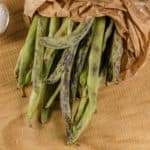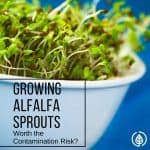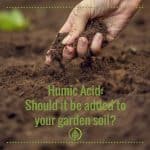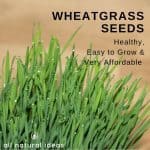Plants need the perfect amount of magnesium to yield exquisitely tasting produce. One thing you can add to soil is magnesium sulfate. But how much Epsom salt for plants is ideal?
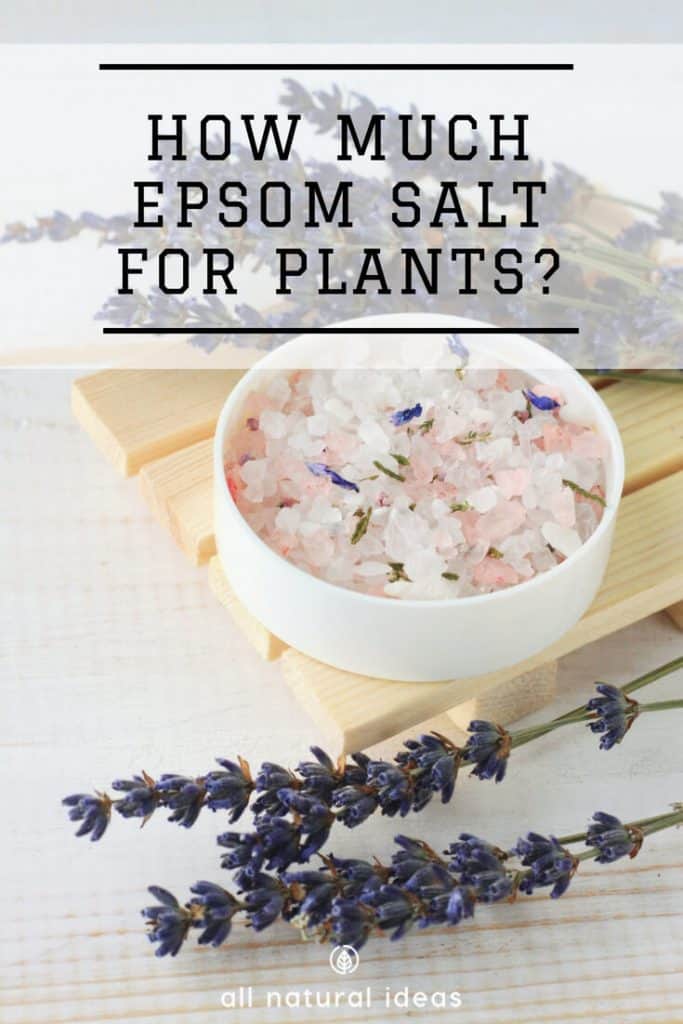
Ahhh … how relaxing a hot bath with epsom salt is.
Many people know that soaking in a tub with it is good for your muscles.
The magnesium sulfate absorbs very well into your skin. Sof if you get cramps or sore muscles from intense workouts, salt baths are great.
But did you know that it’s also beneficial for plants, too?
In fact, magnesium sulfate is perfect for sustainable gardening and landscaping. If you want healthier, lusher plants, consider using it in your green thumb arsenal.
Gardening gurus claim this natural mineral can germinate seeds better. And supposedly, it can also improve uptake of other nutrients.
(However, these claims are debunked by this research article; read it before applying this additive to your plants.)
Nitrogen and phosphorus are two important minerals in plants. The uptake of these minerals and others may be improved by using magnesium sulfate.
Supposedly, using it can also improve flower blooming. Furthermore, it can enhance a plant’s green color, according to this online gardening resource.
However, this begs two questions….
How much epsom salt for plants is ideal? And furthermore, are all brands the same?
We’ll revisit these questions shortly.
But first….
Why else is it good for gardening?
As mentioned above, when you add magnesium sulfate to plants, it can enhance the green color.
The reason why has to do with chlorophyll. Magnesium sulfate helps create chlorophyll, which plants absorb in the presence of light and use for energy.
Without enough chlorophyll, plants can’t use carbon dioxide and water for food.
Got trace minerals in your diet?
In addition, another reason to add it is because of soil depletion. In natural human health, a main selling point for buying organic food is that soil quality is not as high as decades ago.
Consequently, the vitamins and minerals in the soil, in which your salad veggies grow, isn’t as nutritious as it should be.
For this reason, not only is buying organic fruits and veggies vital, it might not be enough. Because of soil depletion, you might also want to buy a trace mineral supplement.
If you’re growing your own veggies and eating them, this be the only trace mineral supplement you need.
That means that you don’t have to buy and expensive bottle of liquid trace minerals and add it to your food or water.
Instead, if you’re growing your own veggie garden, adding magnesium sulfate to your plants can provide your 37.2 trillion cells with the micronutrients they need to maintain health.
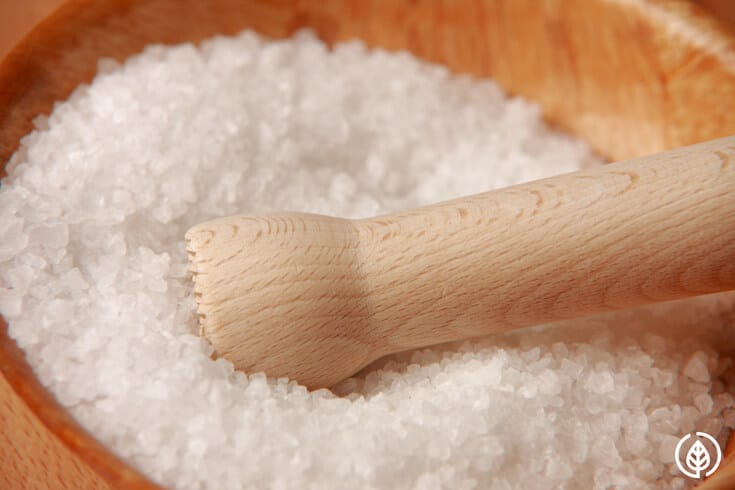
How much Epsom salt for plants? Does it cost a lot?
A bag of this plant nutrient is very inexpensive. In fact, an online search for “trace mineral supplement” yields one result for a one-fluid ounce bottle that costs over $43.
In comparison, a 20-pound bag of magnesium sulfate costs approximately $20.
You do the easy math: one dollar a pound compared to $688 a pound for the trace mineral drops.
So unless you live somewhere where it’s impossible to have a garden, consider growing at least a couple veggies.
And add this soil additive to your plants. Your 37.2 trillion cells (give or take a trillion) will thank you.
Another benefit of using it is water conservation. You simply don’t have to water as much when you add it to your plants.
Therefore, you can save money on your water bill, too.
For maximum plant yields, consider also adding humic acid to your plant soil as well.
How much Epsom salt for plants?
Perhaps none at all is the answer.
You see, don’t just add it without first testing the existing magnesium levels.
In fact, some veggies don’t need that much of it to begin with. GardenKnowHow.com lists legumes and leafy veggie plants as magnesium low-level-loving plants.
But nightshade veggies such as tomatoes and peppers thrive in high magnesium soils. So if you want to add a homegrown, heirloom beefsteak tomato to your salad, add two tablespoons of it to a gallon of water.
According to HarvestToTable.com, use a tank sprayer. Apply the salt. (It’s not really salt; it’s a mineral compound containing 10 percent magnesium and 13 percent sulfur.)
Use it once a month. Again, because you’ll be able to cut down on the amount of water, you can sub the spray for a regular watering.
How often and when should you spray the plants with it?
Use one tablespoon per gallon of water. Spray the leaves throughout their life cycle.
Especially when the blooms begin to appear.
This early in your delectable tomato plant’s life, the magnesium sulfate may enhance germination. In addition, it may prevent rot on the end of the fruit blossoms.
As your tomato plant starts to look, well, more tomatoey, this important soil additive will keep the plants looking healthy, green and vibrant.
HarvestToTable says if your tomato plant doesn’t get enough magnesium, the plant will grow small and spindly.
Plus, the leaves will appear yellow between the leaf veins late in the season. Consequently, your salad tomato and fruit will be slow in maturing and ripening.
The general answer for how much epsom salt for plants is a couple tablespoons per gallon of water. Again, some plants might require more, others less. And some plants might need none.
Add it once a month. If your plants need frequent watering if they’re in the scorching sun, apply more regularly. Up the frequency to every other week.
But cut the “dosage” back to 1 tablespoon.
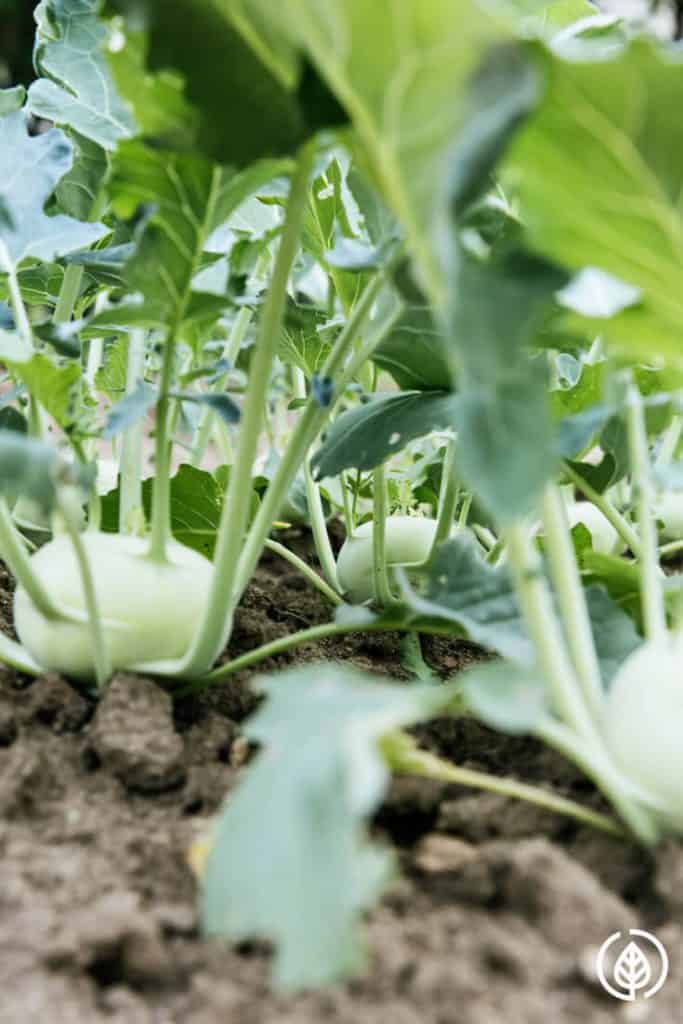
Epsom salt in garden
There is something important to consider about using magnesium sulfate in your garden.
According to this article by a Ph.D. at Washington State University (referenced at the beginning of this article), it might not help at all. In fact, it might do the opposite.
The article states, “Regardless of [plant] type, soils heavily leached by rainfall or irrigation are more likely to exhibit magnesium deficiency. Thus, soil addition of highly soluble Epsom salts under leaching conditions does not benefit magnesium-deficient plants but does increase mineral contamination of water passing through.”
Furthermore, your plants can become toxic if you use too much of it. Spray a lot of it on the leaves, and this can result in “leaf scorch.” (The Washington State University article says a wetting agent can relieve this.)
And if you’re growing your own sugar cane, an increasingly popular item at farmer’s markets, using too much of it can cause root disease.
The use of Epsom salt for plants
The practice of side dressing is when you use a fertilizer like magnesium sulfate in a shallow area along the side of a row of a particular veggie. (Or in a circle around individual plants.)
And what side dressing does it gives extra nutrients to veggies so that they can grow to their full potential. For this reason, HarvestToTable.com recommends applying one tablespoon per foot of plant height around the base of each plant.
Sidedress plants every six weeks beginning soon after leaves appear and continuing through the end harvest, the website suggests.
Epsom salt and plants
If you want to grow legumes, peas, lettuce, and spinach you might not even need any of it at all. That’s because these veggies grow well enough without needing much magnesium.
However, the bottom line, according to the WSU research on how much to use is this….
The science behind how much Epsom salt for plants only applies to “intensive crop production in situations where magnesium is known to be deficient in the soil or in the plants.”
